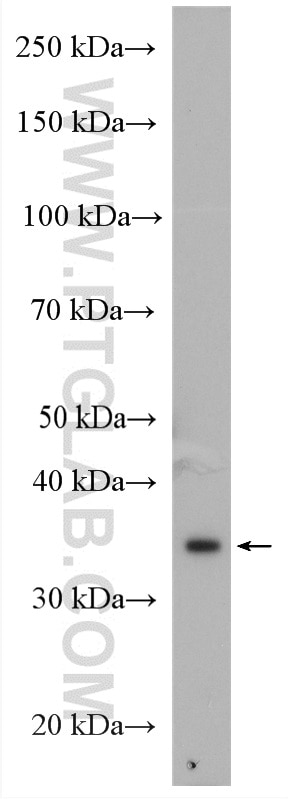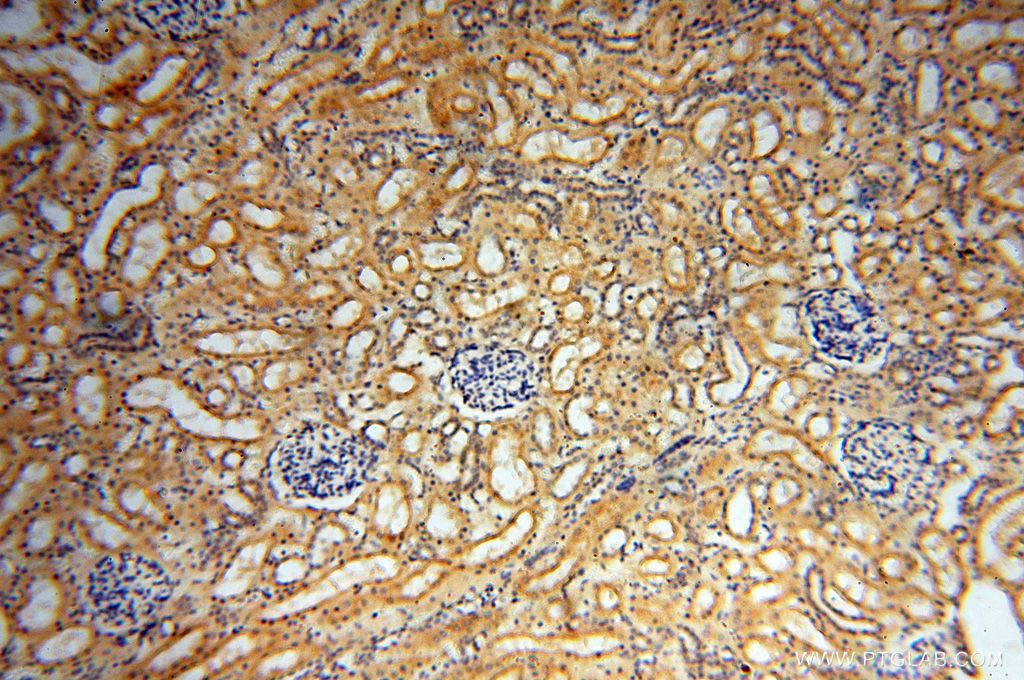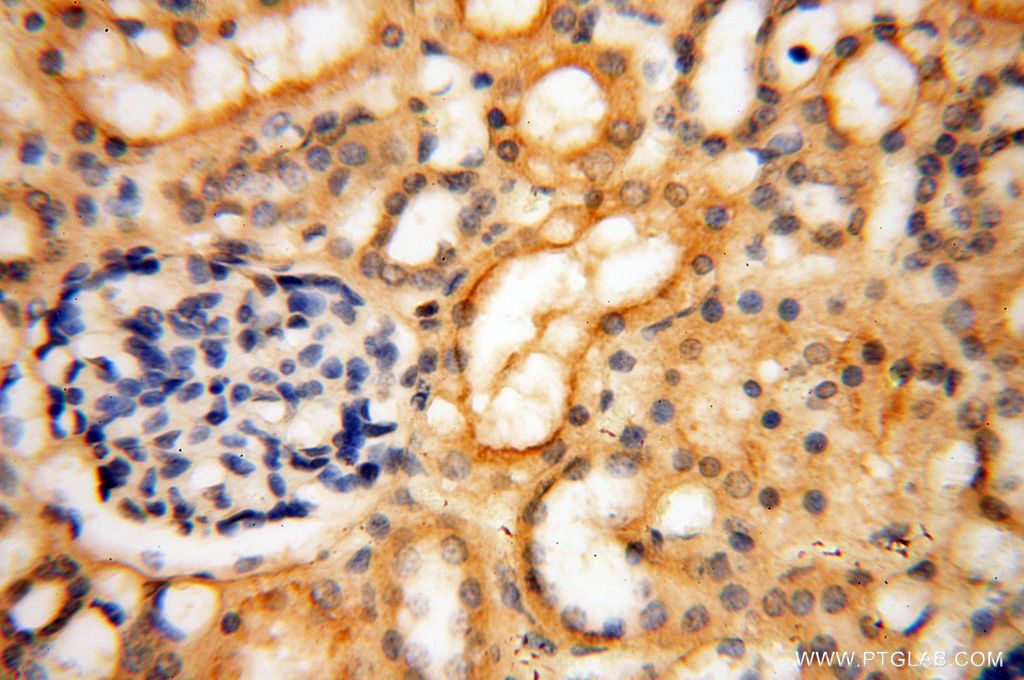- Phare
- Validé par KD/KO
Anticorps Polyclonal de lapin anti-MUL1
MUL1 Polyclonal Antibody for WB, IHC, ELISA
Hôte / Isotype
Lapin / IgG
Réactivité testée
Humain, rat, souris
Applications
WB, IP, IHC, CoIP, ELISA
Conjugaison
Non conjugué
N° de cat : 16133-1-AP
Synonymes
Galerie de données de validation
Applications testées
| Résultats positifs en WB | cellules HeLa |
| Résultats positifs en IHC | tissu rénal humain, il est suggéré de démasquer l'antigène avec un tampon de TE buffer pH 9.0; (*) À défaut, 'le démasquage de l'antigène peut être 'effectué avec un tampon citrate pH 6,0. |
Dilution recommandée
| Application | Dilution |
|---|---|
| Western Blot (WB) | WB : 1:300-1:1000 |
| Immunohistochimie (IHC) | IHC : 1:20-1:200 |
| It is recommended that this reagent should be titrated in each testing system to obtain optimal results. | |
| Sample-dependent, check data in validation data gallery | |
Applications publiées
| KD/KO | See 2 publications below |
| WB | See 7 publications below |
| IP | See 1 publications below |
| CoIP | See 1 publications below |
Informations sur le produit
16133-1-AP cible MUL1 dans les applications de WB, IP, IHC, CoIP, ELISA et montre une réactivité avec des échantillons Humain, rat, souris
| Réactivité | Humain, rat, souris |
| Réactivité citée | rat, Humain, souris |
| Hôte / Isotype | Lapin / IgG |
| Clonalité | Polyclonal |
| Type | Anticorps |
| Immunogène | MUL1 Protéine recombinante Ag9119 |
| Nom complet | mitochondrial E3 ubiquitin ligase 1 |
| Masse moléculaire calculée | 352 aa, 40 kDa |
| Poids moléculaire observé | 35 kDa |
| Numéro d’acquisition GenBank | BC010101 |
| Symbole du gène | MUL1 |
| Identification du gène (NCBI) | 79594 |
| Conjugaison | Non conjugué |
| Forme | Liquide |
| Méthode de purification | Purification par affinité contre l'antigène |
| Tampon de stockage | PBS avec azoture de sodium à 0,02 % et glycérol à 50 % pH 7,3 |
| Conditions de stockage | Stocker à -20°C. Stable pendant un an après l'expédition. L'aliquotage n'est pas nécessaire pour le stockage à -20oC Les 20ul contiennent 0,1% de BSA. |
Informations générales
Mitochondrial ubiquitin ligase 1 (MUL1),MAPL, MULAN, or gGIDE, was identified as an E3 protein ligase by three independent groups. Work in mammalian systems shows that MUL1 has small ubiquitin-like modifier (SUMO) ligase activity, stabilizing Drp1, or ubiquitin ligase activity, degrading Mfn. MUL1 expression in mammalian cells results in smaller and more fragmented mitochondria.
Protocole
| Product Specific Protocols | |
|---|---|
| WB protocol for MUL1 antibody 16133-1-AP | Download protocol |
| IHC protocol for MUL1 antibody 16133-1-AP | Download protocol |
| Standard Protocols | |
|---|---|
| Click here to view our Standard Protocols |
Publications
| Species | Application | Title |
|---|---|---|
J Exp Clin Cancer Res PHB2 promotes SHIP2 ubiquitination via the E3 ligase NEDD4 to regulate AKT signaling in gastric cancer | ||
Oxid Med Cell Longev Inhibition of Prostaglandin E2 Receptor EP3 Attenuates Oxidative Stress and Neuronal Apoptosis Partially by Modulating p38MAPK/FOXO3/Mul1/Mfn2 Pathway after Subarachnoid Hemorrhage in Rats | ||
Life Sci Trichostatin A inhibits skeletal muscle atrophy induced by cigarette smoke exposure in mice. | ||
Eur J Pharmacol Mitochondrial E3 ubiquitin ligase 1 promotes brain injury by disturbing mitochondrial dynamics in a rat model of ischemic stroke.
| ||
Can J Physiol Pharmacol Upregulation of mitochondrial E3 ubiquitin ligase 1 in rat heart contributes to ischemia/reperfusion injury. | ||
J Ginseng Res Ginsenoside compound K protects against cerebral ischemia/reperfusion injury via Mul1/Mfn2-mediated mitochondrial dynamics and bioenergy |




